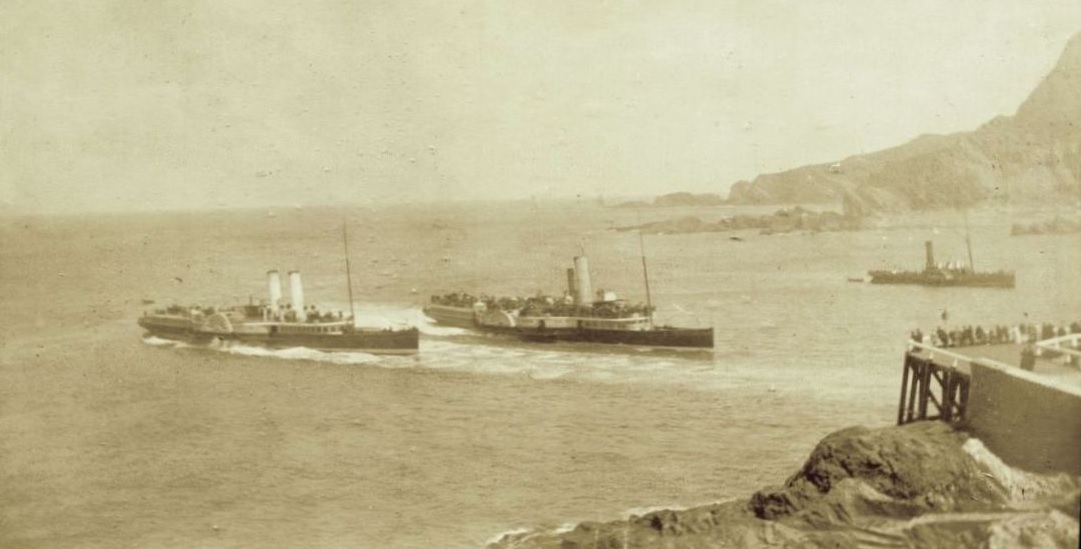paddlesteamers.info : The Internet's leading website for
Side-Wheeled Paddle Steamers
PS
Ravenswood
Launched on 27th
April 1891 by S McKnight at Ayr
Engines : Simple diagonal, replaced by compound diagonal unit in
1909
Dimensions : 215 ft x 24.1 ft
391 Gross Registered
Tons
For their first new
vessel for Bristol, Campbell went back to McKnight of Ayr who had
built Madge Wildfire, their previous vessel.
Reboilered and reengined in 1909 by Barclay, Curle and Co,
re-appearing with one funnel instead of the original two
Grounded at Lavernock Point in 1911
Spent the 1912-14 seasons on the South Coast
Requisitioned during World War I for use as a minesweeper at
Dover.
Went back to the South Coast when Campbells resumed services in 1923,
spending three seasons at Brighton
Not requisitioned initially in World War II, she was the only
remaining Campbell vessel, running the Cardiff-Weston ferry.
The ferry service was withdrawn during 1940 for fear of enemy bombing
raids and Ravenswood was temporarily laid-up
Ravenswood went into naval service in 1941 as an anti-aircraft vessel
at Plymouth and Belfast
Returned to civilian service in 1946, featuring "concealed" paddle
boxes
Withdrawn in May 1955 after a failed safety survey, leaving Bristol
in October of that year for scrapping at Newport

Ravenswood
(left) in her original two-funneled guise in a photo from the mid-1890s
believed to be taken by Alexander Hutson and kindly supplied by Jeremy
Hutson. Alongside and heading towards the vacated berth at Ilfracombe
pier is PS Lorna Doone, which for a short time was one of a number of
paddlers which provided "independent" competition to the Campbells on
the Bristol Channel. She was sold for further service on the south coast
in 1898
Return
to
P and A Campbell
P and A Campbell - Sussex
Operations
British Paddle Steamer
Index
